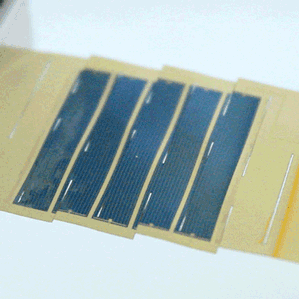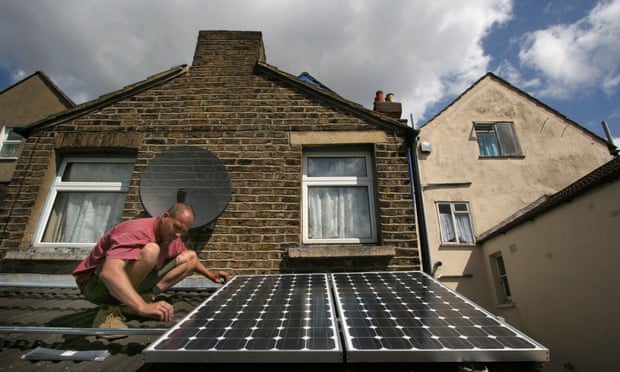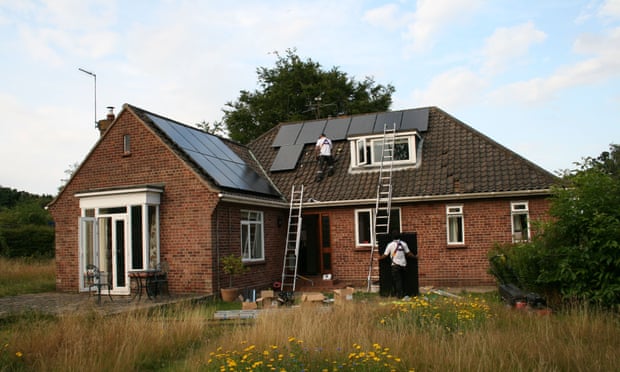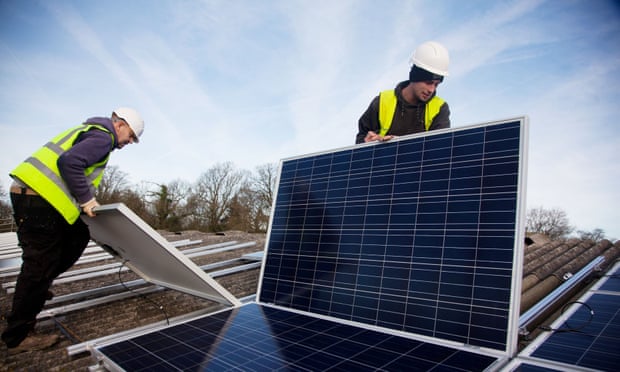‘Railway Solar’ May Be a Sweet Spot for Green Transportation
With climate considerations becoming more important in infrastructure development, train travel and other alternatives to petroleum-powered cars have a renewed relevance.
Trains are far more efficient and less polluting than most cars. In research for my new company focused on providing solar power to electric trains, I’ve been pleasantly surprised at learning how efficient this transportation mode can really be.
Electric trains are 50 percent to 75 percent less polluting than single-passenger cars and trucks and use comparably less energy per passenger-mile, according to a 2009 detailed analysis by Chester and Horvath.
The emissions profile depends a lot, of course, on the grid mix of electricity. Some grids, like in California, the Pacific Northwest and New England, are fairly clean already due to a mix of hydropower, wind, solar, geothermal, nuclear and natural gas.
And over time, these grids are becoming cleaner. California, for example, now has a 50 percent mandate for renewable electricity by 2030. Regular cars are also becoming cleaner due to market forces and increasing fuel-efficiency requirements (CAFE) at the federal level, so the ratios may change a bit with time.
FIGURE 1: Greenhouse Gas Emissions of Various Transportation Modes
Source: Chester and Horvath, 2009
I’ve written previously about the problem posed by China and other developing nations wanting to join the Western model of widespread individual car ownership. Car ownership per capita in China, for example, is one-eighth what it is in the U.S. and far less than that in India.
Even if all of the billions of new cars in the world in the coming decades are electric vehicles and are relatively low-polluting, there will still be many issues relating to resource constraints and congestion, as well as higher-than-necessary emissions from what is inherently a less-efficient transportation mode than mass transit.
One readily available alternative to the private vehicle ownership model is to make public transportation so good that people will choose to take a train rather than drive, or to forgo private car ownership even if they could afford one or more of their own cars. This model is becoming a reality with the rapid growth of electric-train systems around the world, particularly in Asia.
For example, Chinese electric train systems have more than doubled in size over the last decade and are now at almost 70,000 miles of track, by far the biggest in the world. India is in second place, with about 40,000 miles of track and growing.
Electric trains are a type of electric vehicle (EV). This may seem to be an obvious point, but the discussion of EVs here at GTM and elsewhere rarely includes electric trains under this rubric. I’ve been guilty of this omission myself despite my longstanding love of trains, electric or otherwise. As EVs, electric trains can be more or less polluting based on the grid mix from which they draw power, as with EVs more generally.
My recent article rebutting a working paper on the environmental impacts of EVs highlighted the fact that the location of EVs matters a lot. If the EV at issue is powered entirely with local renewable energy, the whole system is almost emissions-free: the true sweet spot for global transportation.
For a personal EV, solar on home rooftops can power most families’ car travel needs. The equivalent for electric trains is what I call “railway solar”: putting solar on train station rooftops, parking lots and on solar canopies over or adjacent to the train tracks themselves.
Electric trains are so efficient that a single 300-watt solar panel (about 4x6 feet) can provide up to 7,000 miles of an individual’s commuting miles per year, or 5 to 20 miles per day. The national average, based on National Transportation Database data on the efficiency of the various U.S. electric train systems, is about 4,000 miles per year for each 300-watt solar panel. One mile of train tracks can support 1 megawatts to 3 megawatts of solar panels, which can provide 2 million and 6 million passenger-miles of train travel. Yes, million.
The passenger-miles provided by solar or other renewables is practically emissions-free, even if we include the energy costs required to manufacture and ship the panels.
FIGURE 2: Miles of Daily Train Travel per 300-Watt Solar Panel
Source: NTD data and NREL insolation data
These numbers highlight just how efficient electric trains can be. The equivalent miles from one 300-watt solar panel for a regular electric car -- my tiny Fiat 500e, for example -- would be just 1,600 miles per year, or about 40 percent of the national average for U.S. electric trains. So electric trains are about 2.5 times more efficient than most personal EVs, which are in turn about 2.5 to 3 times more efficient than a highly efficient internal-combustion engine.
Here's another way of looking at it: my Fiat could carry the equivalent of about one 300-watt panel on its upper surface, which would provide just 4.5 miles per day of driving, or 1,643 miles per year. That same panel would provide on average 4,000 passenger-miles per year. There is enough space in the existing rail infrastructure -- on train stations and near train tracks -- for enough solar panels to provide all of the electric train’s power demand.
These numbers translate to the ability to supply a majority or even all of U.S. electric train systems from solar power. For example, Chicago’s Metra Electric line (one of the busiest metro systems in the country) is 31 miles in length. If just 18 of those 31 miles were covered in solar at 1 megawatt per mile, these panels, taking into account the solar radiation in the Chicago area, could supply 100 percent of that line’s electric needs each year.
Other renewables
Wind power is another obvious option for powering electric trains with on-site renewables -- where there are strong wind resources. Distributed wind has not taken off in the U.S. anywhere near to the degree that distributed solar has, but it could be a viable option in many circumstances, particularly where there are state rebates to offset the cost of wind turbines. Wind power in desirable locations is still cheaper than power from solar panels, and can also complement solar power by producing power at night.
Biomass power is also somewhat modular, but highly dependent on feedstock. Dairy gas in California’s Central Valley, for example, could supply a significant amount of the electricity demand for the planned high-speed rail project.
Challenges facing electric trains
Nothing is perfect, and electric trains do have some downsides. We’ve seen many of these downsides highlighted in the debate over the California High-Speed Rail project, which is now under construction after years of delays.
High-speed trains are almost always electric because of the power and efficiency that electric trains offer. A notable exception to this rule can be found with the proposed coastal portion of the California HSR. Due to aesthetic concerns over the catenary lines of electric high-speed trains, the current plan is to make this portion, eventually going through my hometown of Santa Barbara, traditional diesel rather than electric.
Train tracks can require a lot of land, and there are certainly areas where people are hostile to giving up land for new trains, even with fair market compensation. This is partly why the costs of California’s high-speed train have ballooned from initial estimates: the cost of acquiring land for new trains, and the legal battles that follow, can be prohibitive. This is not a problem, however, when we’re dealing with existing train systems, since those battles have been fought and resolved. Efforts to solarize train systems should focus on existing rail rather than new rail systems.
Trains can be noisy, particularly high-speed trains, because they are traveling at such high speeds (upward of 200 miles an hour in many cases). One cool feature of solar canopies over train tracks, however, is that they can include noise-reduction features by enclosing one or both sides of the train with transparent glass. Even better, a number of companies are now working on very thin solar films that coat glass and can actually produce power while still allowing all visible light to go through. In such a case, noise-reduction glass could increase solar power production further, but with additional cost.
Speaking of cost, railway solar canopies will require increased costs in terms of additional support structure and engineering that is specific to the electric-train market. Solar carports are pretty comparable, but they are not as tall and don’t need to be as robust as railway solar canopies. We can expect, however, that the larger scales made possible with railway solar canopies (1 megawatts to 3 megawatts per mile of track) could cut back much of the increased cost of structural support and engineering due to economies of scale.
Is the future going to include significant amounts of solarized electric trains? Given current trends for solar panel prices and the dramatic growth of electric trains around the world, it does seem likely, purely from an economic point of view. When we add in the environmental and other benefits from solarizing electric trains, it becomes even more likely.
My last column looked at the potential for the hyperloop concept championed by Elon Musk and others inspired by his vision. I concluded that the concept has tremendous promise but that the cost of actual projects is a challenging factor. We’ll have to wait and see how real-world costs pan out as actual hyperloop projects start to get built.
Railway solar has very wide applicability even if hyperloops catch on. This is the case because hyperloops are by their nature appropriate for longer distance travel rather than commuter or light rail lines, which are the sweet spot for solar trains. Long-distance high-speed rail can and should be solarized, but if hyperloops end up displacing planned and/or actual high-speed trains, then solarized hyperloops ensure that renewables still power our transportation future.
My preferred future looks something like this: a network of solar-powered hyperloops connecting cities around the world; solar-powered commuter and light rail in each of those cities; and self-driving electric cars, ferrying people to and from train stations and hyperloop stops.
And, of course, those electric cars will also be powered primarily from solar and other renewables, either on peoples’ homes or from the ultra-clean power grid of the future.
Source by:
https://www.greentechmedia.com/articles/read/railway-solar-may-be-a-sweet-spot-for-green-transportation

























